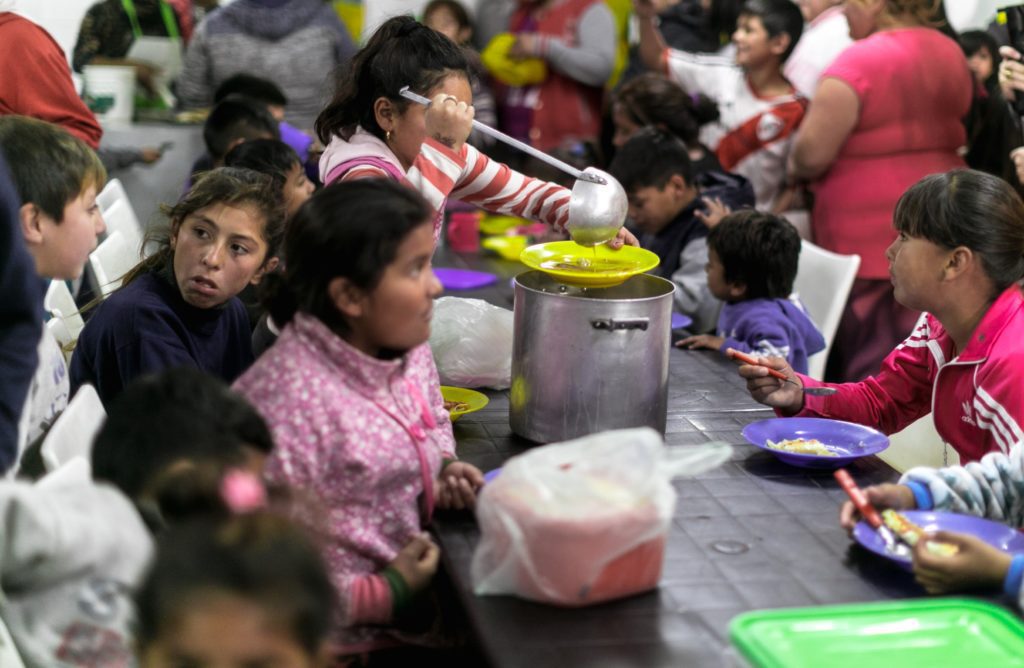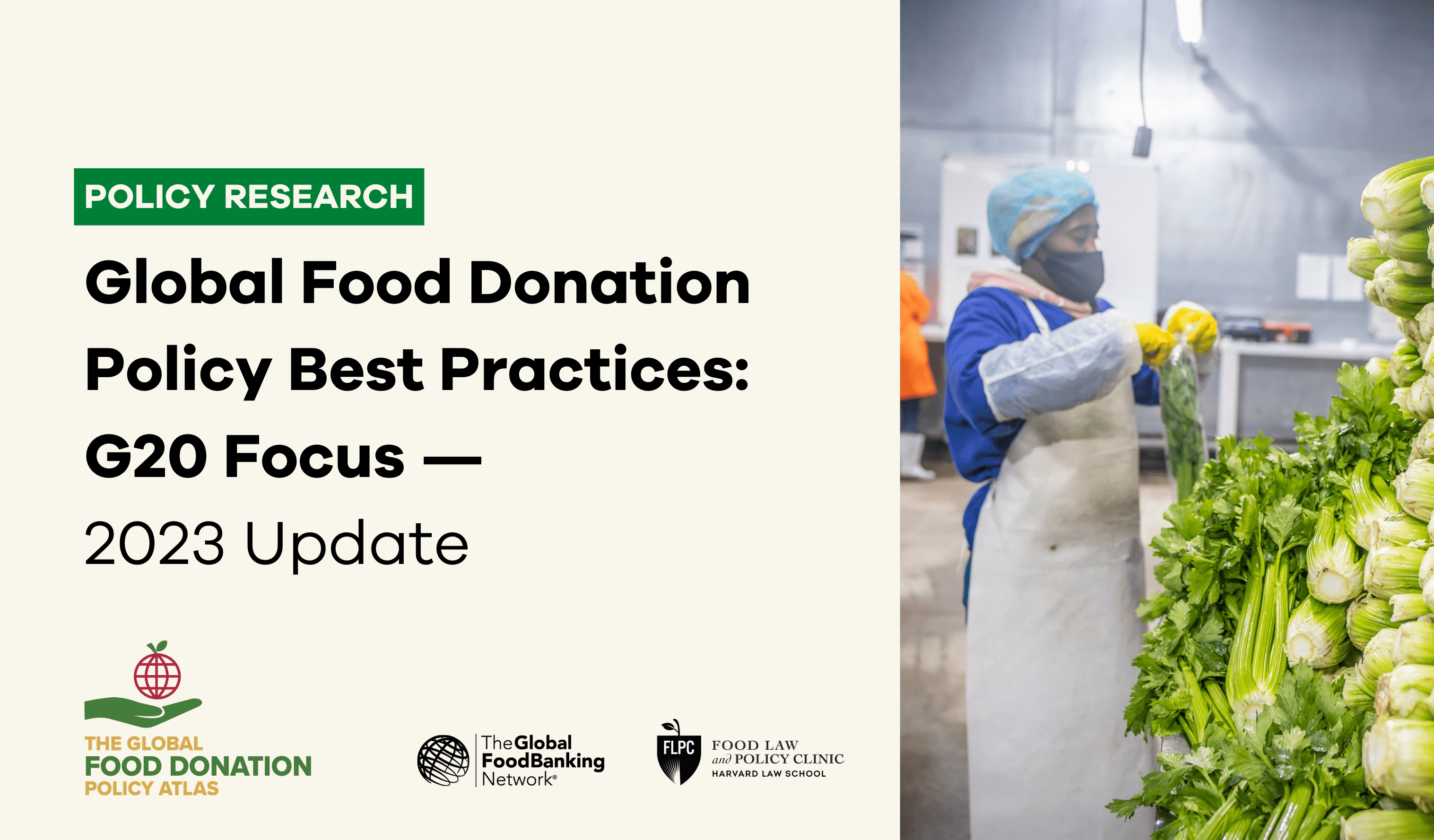The Global FoodBanking Network (GFN) and Harvard Law School’s Food Law and Policy Clinic (FLPC) recently wrapped up the latest series of webinars, sharing knowledge and deepening exchange among stakeholders working in food donation, food redistribution, and food loss and waste.
This series of webinars built on the body of research from GFN and FLPC’s Global Food Donation Policy Atlas. Covering 25 countries and 7 core subject areas, the Atlas has become a global reference for food donation laws around the world.
“Our work has been about trying to map policies around the world to really understand the best practices for government to eliminate the barriers to distributing surplus food that is safe and edible to the people who need it,” said Emily Broad Leib, director of the FLPC.
The series of webinars this spring and summer, hosted in partnership with Food for the Future, dug deeper into three core research topics: national strategies for food waste and food donation; ESG, Scope 3 ,and food waste reporting; and government grants and incentives.
Each session welcomed a panel of experts from government, the private sector, and civil society and was moderated by Ertharin Cousin, founder and CEO of Food for the Future and former executive director of the World Food Program.
“Scaling food recovery and donation is essential for human health as well as planetary health,” Cousin said while kicking off the national strategies webinar in April. To discuss how countries can and have developed national strategies for food loss and waste, the session convened Lana Coppolino Suárez, associate manager in the materials management branch of the U.S. Environmental Protection Agency (EPA); Pete Pearson, senior director of food loss and waste at the World Wildlife Fund USA; and Valentina Huepe Follert from the circular economy office at the Chilean government’s ministry of the environment.
“It is going to take longer than you think” to design a national strategy, Coppolino Suárez advised. “The interagency coordination [between the EPA, the U.S. Department of Agriculture, and the Food and Drug Administration] took a lot of time.”
Despite challenges, many food waste strategies can be replicated across countries.
“This harmonization around getting countries to adopt food donation strategies that are similar is amazing, and the [Global Food Donation Policy] Atlas helps us re-envision what this could look like,” Pearson said. “When we go across borders, there is continuity around things like food donation and food handling.” He said global improvements on food legislation can and should happen quickly.
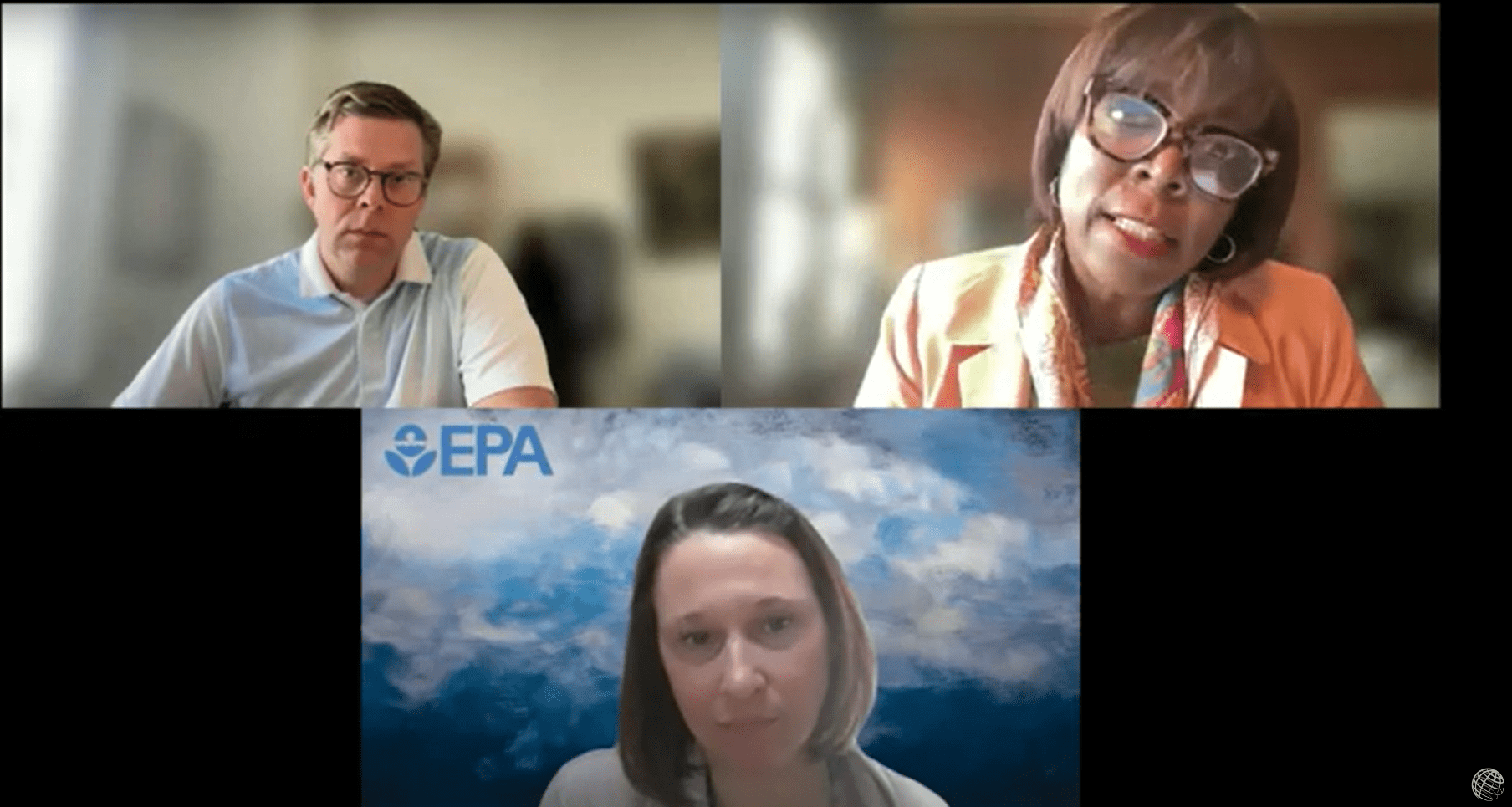
The next webinar focused on ESG, Scope 3, and food waste reporting and was kicked off by Douglas L. O’Brien, vice president of programs at The Global FoodBanking Network.
O’Brien said, “This isn’t just about data; this is an issue that affects all of us. Right now, we’re badly off track to achieve the Sustainable Development Goals. But we have the solutions in front of us. For food companies to make progress on food loss and waste across the supply chain, they have to be able to measure it.”
The session featured a panel including: Janelle Meyers, chief sustainability officer at Kellanova; Brian Lipinski, research associate, food program at the World Resources Institute; Claudia Sanchez Castro and Gabriella Rosato from the Red de Bancos de Alimentos de Mexico; and Gray E. Norton, clinical fellow at the FLPC.
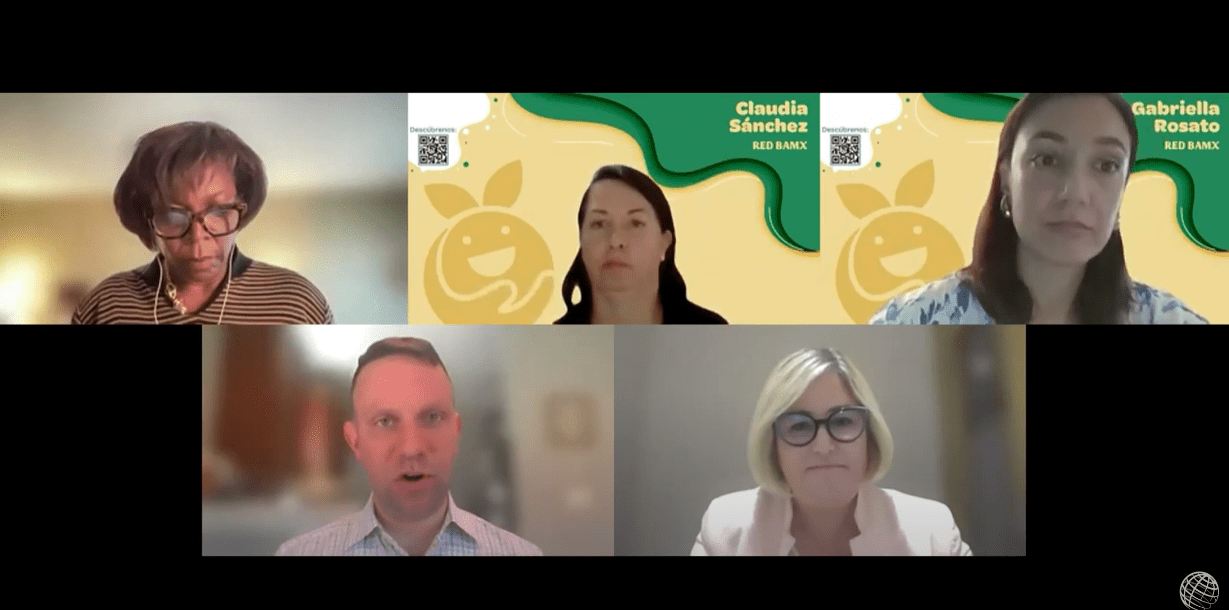
“It’s important that we talk about measurement in the service of actions,” said Lipinski. “Without measurement and reporting, we don’t know where we’re starting from, and we can’t tell if we’re making progress.”
In Mexico, that’s just what the food banking network is doing through its Pacto Por la Comida voluntary reporting agreement with food companies.
“We have been working with our donors and partners in the food manufacturing sector to show the benefits of measuring and reducing their food loss and waste,” said Rosato. “We want these companies to see the economic value of reducing food loss and waste, share their experiences, and learn more from other companies by sharing innovative practices.”
Global manufacturers like Kellanova have only made strides because they measure waste.
“We have committed to reducing food waste 50 percent in our own global manufacturing facilities by the end of 2030, and we’re more than halfway to that goal,” said Kellanova’s Meyers. “We’re doing that by measuring food loss and waste in our facilities and implementing solutions.”
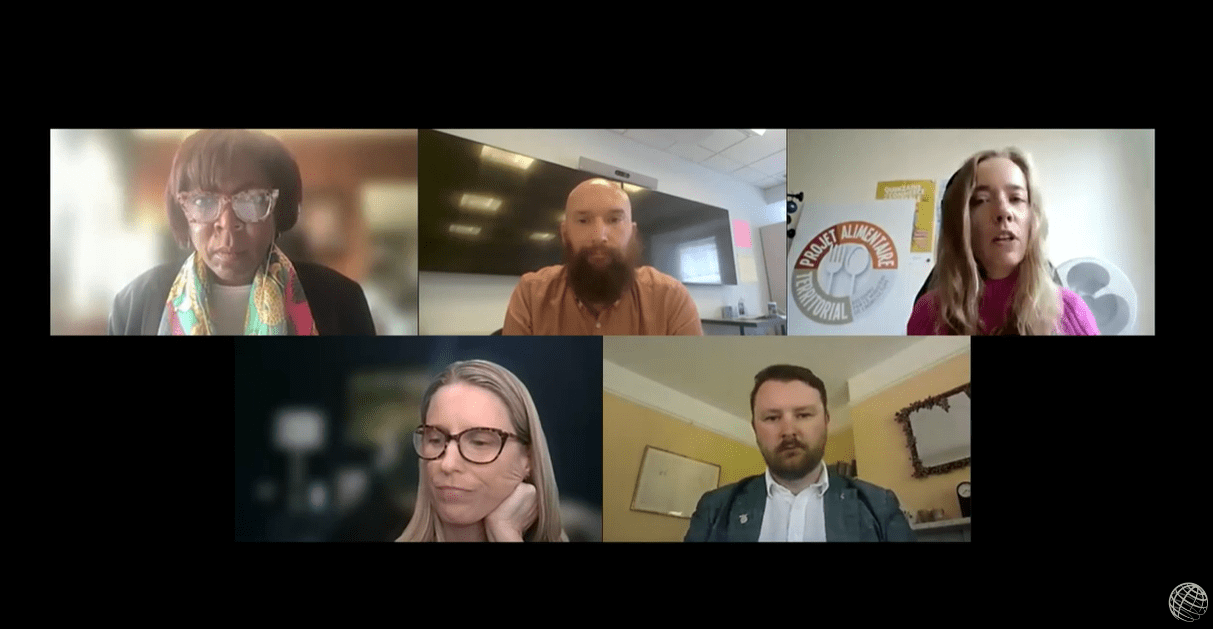
The latest webinar dove into government grants and incentives for food donations and recovery. The panel of experts was made up of: Ali Gourley, public affairs, policy and campaigns consultant at FareShare in the UK; Carrie Calvert, VP of government relations at Feeding America; Maïwenn L’Hoir from France’s Ministry of Agriculture; and Trevor Findley, clinical instructor at the FLPC.
Panelists agreed that relatively simple incentives can spur food donation, but much work remains to be done across the world.
“In the UK, we’re just below 1 percent of surplus food being distributed,” said Gourley, comparing it to 3.6 percent in France, 4.1 percent in Spain, and 6.6 percent in the U.S. “The reason those countries are distributing a high portion of their surplus food is because they’ve implemented incentive policies and we haven’t.”
This has proven true in France.
“France is known for its tax incentives on food donations,” said L’Hoir. “There is a tax deduction of 60 percent of the value of the donation. This makes donation much more attractive for donors.”
Despite existing U.S. federal programs that help fund food recovery, like the $4-million Farm to Food Bank program, the U.S. government can do more, argued Calvert from Feeding America.
“There are other opportunities where there are U.S. grants that don’t have food recovery at their heart but funding can accomplish multiple things, including food recovery,” like many agriculture and food grant programs through the U.S. Department of Agriculture, she said.
These webinars proved fruitful for stakeholders from the private sector, government, and regulatory agencies, and food banks and other food recovery organizations. GFN and FLPC will continue to publish new research and host future webinars to continue spreading knowledge and expertise to advance food donation and redistribution around the globe.
